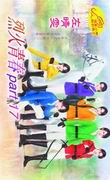pale blue dot -carl sagan-第62章
按键盘上方向键 ← 或 → 可快速上下翻页,按键盘上的 Enter 键可回到本书目录页,按键盘上方向键 ↑ 可回到本页顶部!
————未阅读完?加入书签已便下次继续阅读!
ne lifetime; but of a dozen。 Nothing on this scale has occurred since the invention of the telescope。 So in mid July 1994; in a beautifully coordinated international scientific effort; telescopes all over the Earth and in space turned towards Jupiter。
Astronomers had over a year to prepare。 The trajectories of the fragments in their orbits around Jupiter were estimated。 It was discovered that they would all hit Jupiter。 Predictions of the timing were refined。 Disappointingly; the calculations revealed that all impacts would occur on the night side of Jupiter; the side invisible from the Earth (although accessible to the Galileo and Voyager spacecraft in the outer Solar System)。 But; happily; all impacts would occur only a few minutes before the Jovian dawn; before the impact site would be carried by Jupiter's rotation into the line of sight from Earth。
The appointed moment for the impact of the first piece; Fragment A; came and went。 There were no reports from ground…based telescopes。 Planetary scientists stared with increasing gloom at a television monitor displaying the data transmitted to the Space Telescope Science Institute in Baltimore from the Hubble Space Telescope。 There was nothing anomalous Shuttle astronauts took time off from the reproduction of fruit flies; fish; and newts to look at Jupiter through binoculars。 They reported seeing nothing。 The impact of the millennium was beginning to look very much like a fizzle。
Then there was a report from a ground…based optical telescope in La Palma in the Canary Islands; followed by announcements from a radiotelescope in Japan; from the European Southern Observatory in Chile; and from a University of Chicago instrument in the frigid wastelands of the South Pole。 In Baltimore the young scientists crowding around the TV monitor—themselves monitored by the cameras of CNN—began to see something; and in exactly the right place on Jupiter。 You could witness consternation turn into puzzlement; and then exultation。 They cheered; they screamed; they jumped up and down。 Smiles filled the room。 They broke out the champagne。 Here was a group of young American scientists—about a third of them; including the team leader; Heidi Hammel; women—and you could imagine youngsters all over the world thinking that it might be fun to be a scientist; that this might be a good daytime job; or even a means to spiritual fulfillment。
For many of the fragments; observers somewhere on Earth noticed the fireball rise so quickly and so high that it could be seen even though the impact site below it was still in Jovian darkness。 Plumes ascended and then flattened into pancake…like forms。 Spreading out from the point of impact we could see sound and gravity waves; and a patch of discoloration that for the largest fragments became as big as the Earth。
Slamming into Jupiter at 60 kilometers a second (130;000 miles an hour); the large fragments converted their kinetic energy partly into shock waves; partly into heat。 The temperature in the fireball was estimated at thousands of degrees。 Some of the fireballs and plumes were far brighter than all the rest of Jupiter put together。
What is the cause of the dark stains left after the impact? It might be stuff from the deep clouds of Jupiter…from the region to which ground…based observers cannot ordinarily see…that welled up and spread out。 However; the fragments do not seem to have penetrated to such depths。 Or the molecules responsible for the stains might have been in the etary fragments in the first place。 We know from the Vega 1 and 2 Soviet missions and the Giotto mission of the European Space Agency—both to Halley's et—that ets may be as much as a quarter posed of plex organic molecules。 They are the reason that the nucleus of Halley's et is pitch black。 If some of the etary organics survived the impact events; they may have been responsible for the stain。 Or; finally; the stain may be due to organic matter not delivered by the impacting etary fragments; but synthesized by their shock waves from the atmosphere of Jupiter。
Impact of the fragments of et Shoemaker…Levy 9 with Jupiter was witnessed on seven continents。 Even amateur astronomers with small telescopes could see the plumes and the subsequent discoloration of the Jovian clouds。 Just as sporting events are covered at all angles by television cameras on the field and from a dirigible high overhead; six NASA spacecraft deployed throughout the Solar System; with different observational specialties; recorded this new wonder—the Hubble Space Telescope; the International Ultraviolet Explorer; and the Extreme Ultraviolet Explorer all in Earth orbit; Ulysses; taking time out from it investigation of the South Pole of the Sun; Galileo; on the way to its own rendezvous with Jupiter; and Voyager 2; far beyond Neptune on its way to the stars。 As the data are accumulated and analyzed; our knowledge of ets; of Jupiter; and of the violent collisions of worlds should all be substantially improved。
For many scientists—but especially for Carolyn and Eugene Shoemaker and David Levy—there was something poignant about the etary fragments; one after the other; making their death plunges into Jupiter。 They had lived with this et; in a manner of speaking; for 16 months; watched it split; the pieces; enshrouded by clouds of dust; playing hide…and…seek and spreading out in their orbits。 In a limited way; each fragment had its own personality。 Now they're all gone; ablated into molecules and atoms in the upper atmosphere of the Solar System's largest planet。 In a way; we almost mourn them。 But we're learning from their fiery deaths。 It is perhaps some reassurance to know that there are a hundred trillion more of them in the Sun's vast treasure…house of worlds。
THERE ARE ABOUT 200 known asteroids whose paths take them near the Earth。 They are called; appropriately enough; 〃near…Earth〃 asteroids。 Their detailed appearance (like that of their main…belt cousins) immediately implies that they are the products of a violent collisional history。 Many of them may be the shards and remnants of once…larger worldlets。
With a few exceptions; the near…Earth asteroids are only a few kilometers across or smaller; and take one to a few years to make a circuit around the Sun。 About 20 percent of them; sooner or later; are bound to hit the Earth—with devastating consequences。 (But in astronomy; 〃sooner or later〃 can enpass billions of years。) Cicero's assurance that 〃nothing of chance or hazard〃 is to be found in an absolutely ordered and regular heaven is a profound misperception。 Even today; as et Shoemaker…Levy 9's encounter with Jupiter reminds us; there is routine interplanetary violence; although not on the scale that marked the early history of the Solar System。
Like main…belt asteroids; many near…Earth asteroids are rocky。 A few are mainly metal; and it has been suggested that enormous rewards might attend moving such an asteroid into orbit around the Earth; and then systematically mining it—a mountain of high…grade ore a few hundred miles overhead。 The value of platinum…group metals alone in a single such world has been estimated as many trillions of dollars—although the unit price would plum






![[BLEACH]我和死神有个约会封面](http://www.xibiju.com/cover/5/5896.jpg)
